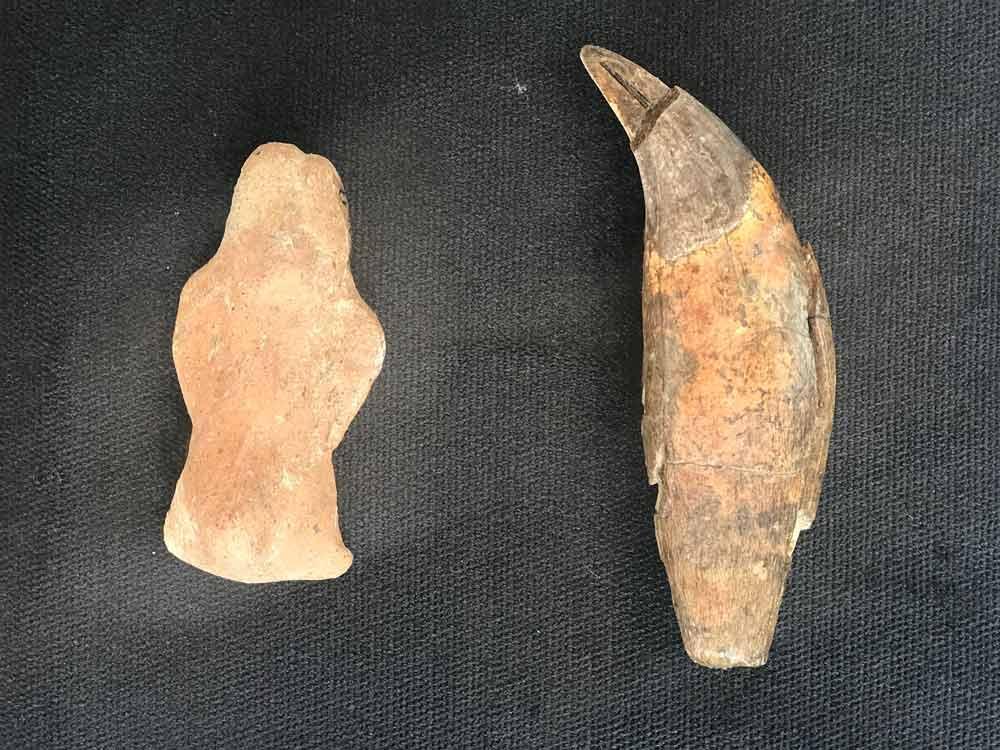
During the excavations of the 8,500 year-old Yeşilova Mound, known as the oldest settlement in İzmir’s Bornova district, important artifacts that provide information about life in the Neolithic Age have been unearthed.
Speaking to Anadolu Agency, head of the excavation team, Assistant Professor Zafer Derin said by the end of the summer season, they had unearthed more than 200 artifacts and had obtained significant data about life in the region thousands of years ago.
Among the artifacts unearthed in the excavations, Derin said a five-centimeter-tall bear statuette dating back to 8,000 years ago was the most striking among them.
“Excavations in and around İzmir revealed that the panther and Anatolian leopard were important animal figures. A bear figure was found in the excavations of Çatalhöyük. There was a lot of interest in animals in this era in Anatolia.
Sometimes they were tied to fear or sometimes they were tied to holiness. The small bear statuette that we found in the Yeşilova Mound is an example of them,” he said.
Derin said they believe the very rare bear statuette was used as a toy to make children love animals.Derin said they had also found a 5,000-year-old pigeon-shaped bottle-nosed pitcher, which might have been used to feed babies.
He said that in that era, the lives of people and animals had been very intertwined.
“People might have used this pitcher to give water or milk to babies 5,000 years ago. Mothers tell their children ‘look, the bird is coming’ when feeding them. Maybe this expression comes from thousands of years ago,” said Derin.
Another finding from the Neolithic Age was a small house sculpture, which gives information about architecture in that era 8,000 years ago, he said.
“This small sculpture is a house from the Aegean region. It is like a sacred house. It was placed inside the home. People worshipped this sculpture, which depicts fruitfulness and fertility. An architect from this era made this sculpture experimentally and it has survived until now. Because the roof is not plain but slopes, it tells us it was made to protect the house from rains. It was built like the Greek temples in western Anatolia,” Derin said.
Derin also said they had removed a 10-12 centimeter-long front shearing tooth of a bear during the excavations in Yassıtepe. “We think these findings of a dead bear might have been used as jewelry as a symbol of power,” he said.